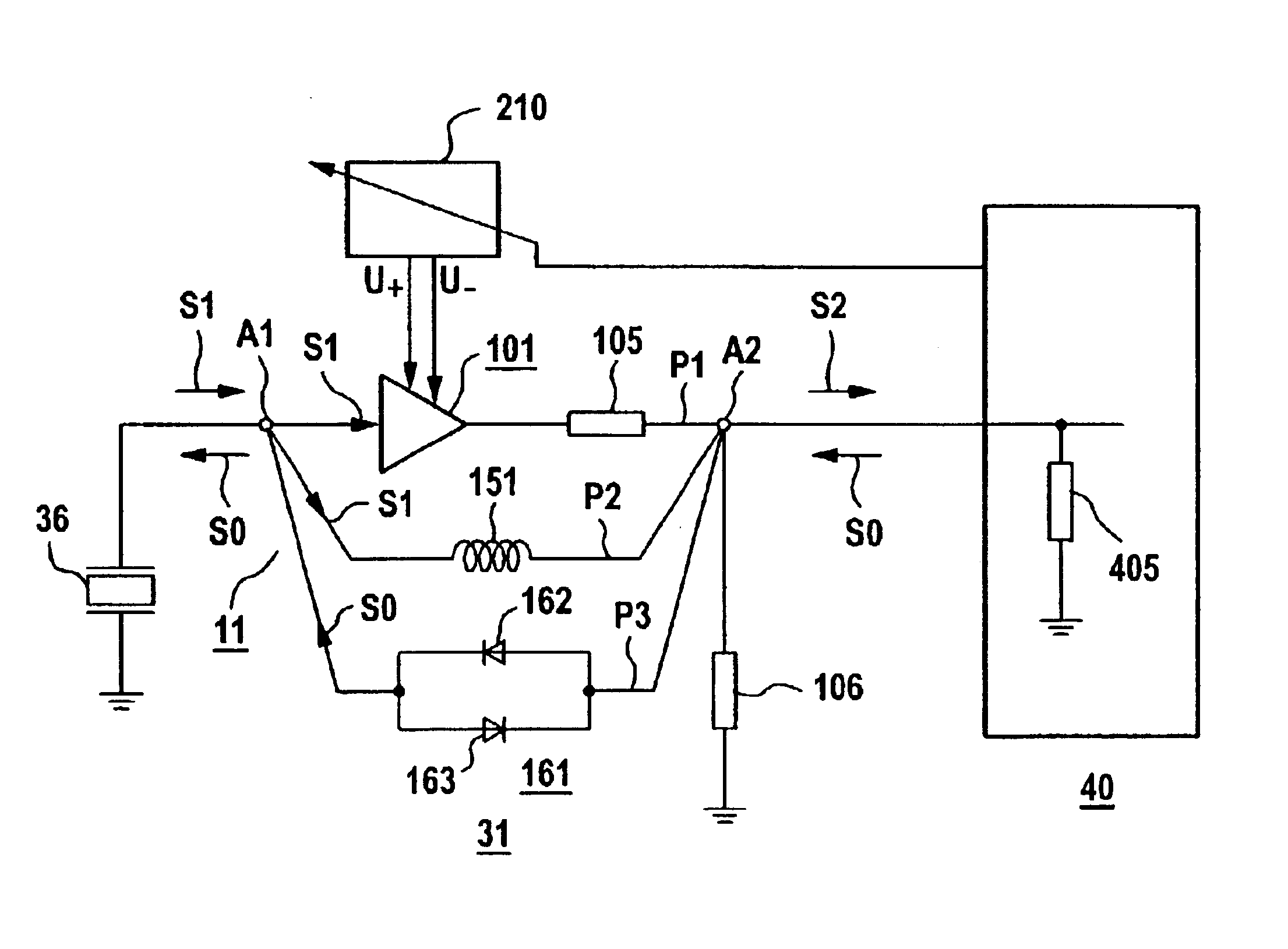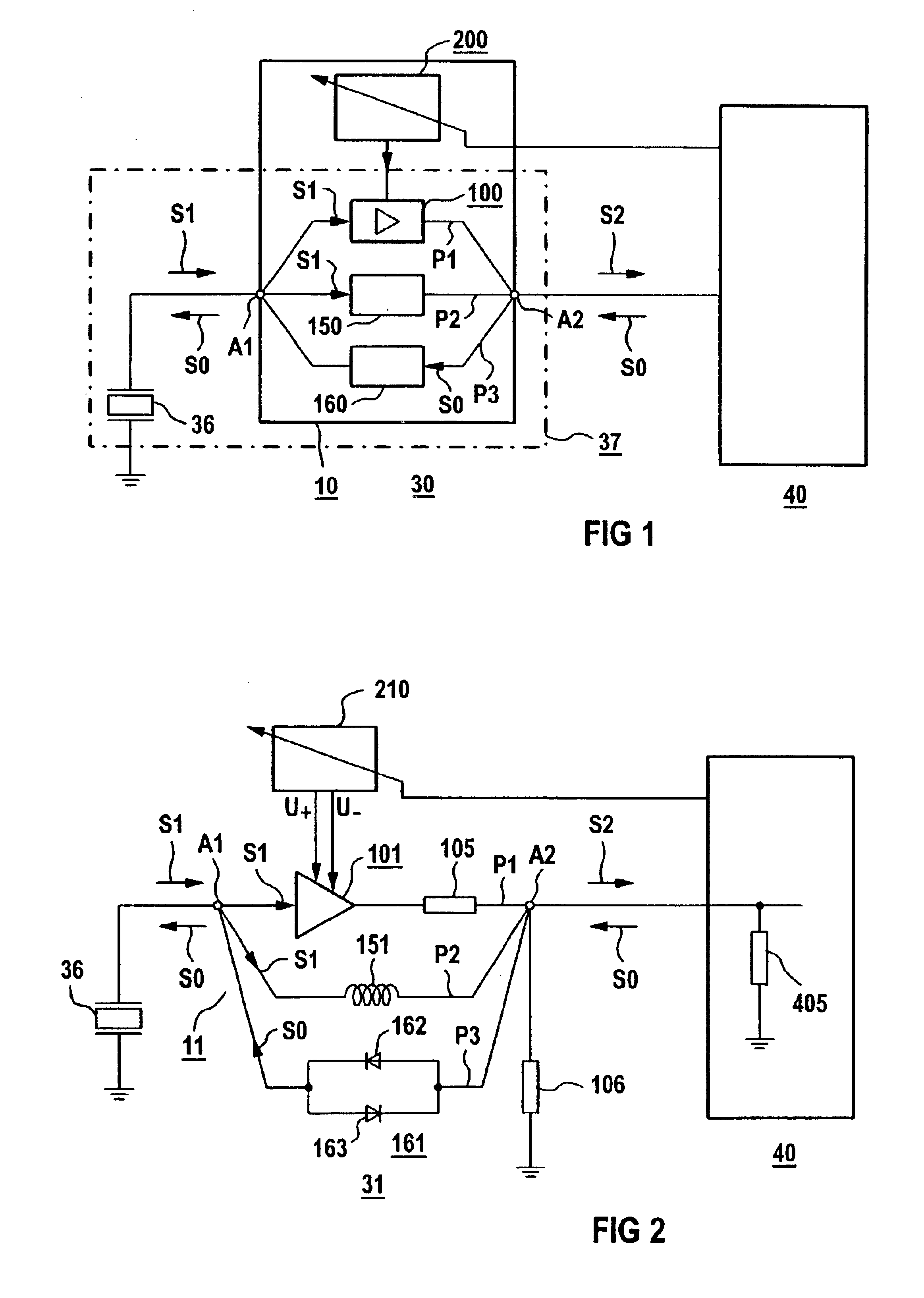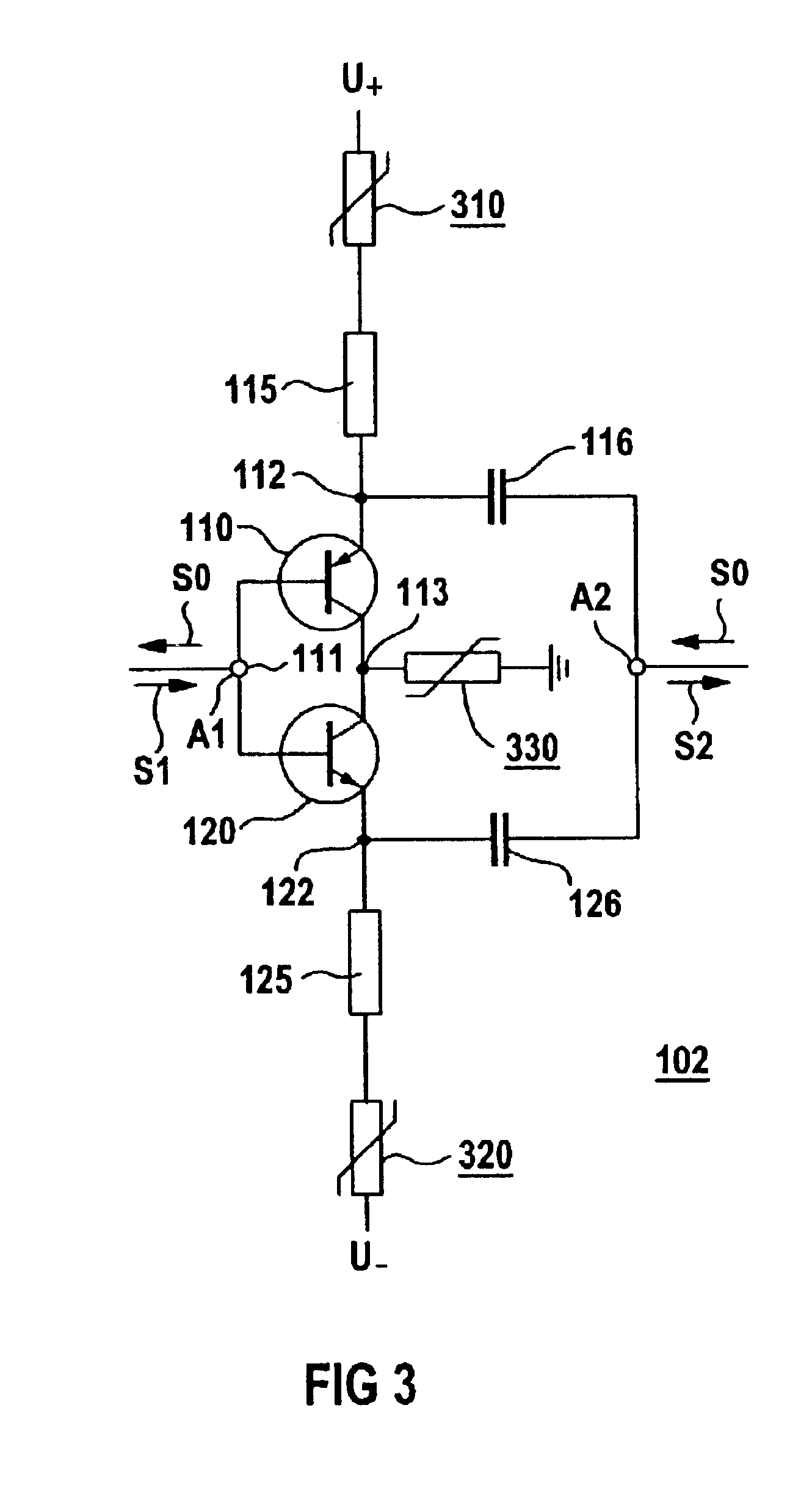Amplifier device with a selectable active or passive operational mode and ultrasonic apparatus
- Summary
- Abstract
- Description
- Claims
- Application Information
AI Technical Summary
Benefits of technology
Problems solved by technology
Method used
Image
Examples
Embodiment Construction
Corresponding parts have been provided with the same reference symbols in FIG. 1 to 4.
An ultrasound device 30, having an amplifier arrangement 10, a sound transducer 36 and a transmitter / receiver unit 40, is represented in FIG. 1. The sound transducer 36 is connected to ground on one side and is electrically connected with a contact A1 of the amplifier arrangement 10. A second contact A2 of the amplifier arrangement 10 is electrically connected via a connecting line, not represented in detail, with the transmitter / receiver unit 40. The amplifier arrangement 10 is comprised of a total of three signal paths P1, P2 and P3, which are intended for signal transmission between the two contacts A1 and A2. In particular, the first and the second signal path P1, or P2, are intended for the receiving direction, and the third signal path P3 for the transmitting direction. The division into different signal paths for the transmitting and receiving directions is primarily advantageous because the...
PUM
 Login to View More
Login to View More Abstract
Description
Claims
Application Information
 Login to View More
Login to View More - R&D
- Intellectual Property
- Life Sciences
- Materials
- Tech Scout
- Unparalleled Data Quality
- Higher Quality Content
- 60% Fewer Hallucinations
Browse by: Latest US Patents, China's latest patents, Technical Efficacy Thesaurus, Application Domain, Technology Topic, Popular Technical Reports.
© 2025 PatSnap. All rights reserved.Legal|Privacy policy|Modern Slavery Act Transparency Statement|Sitemap|About US| Contact US: help@patsnap.com



